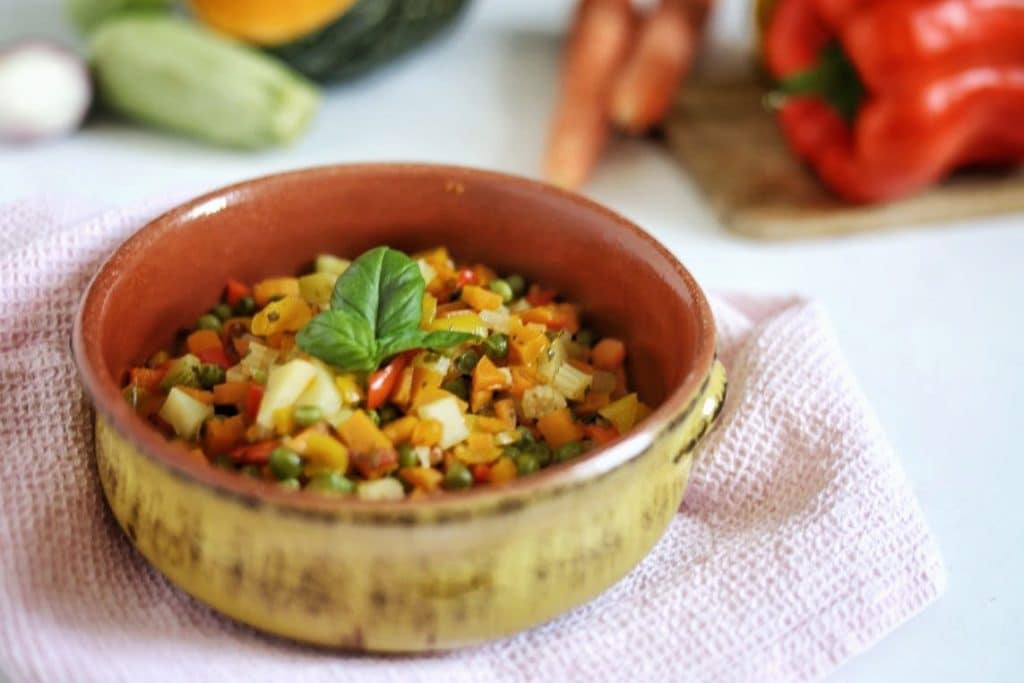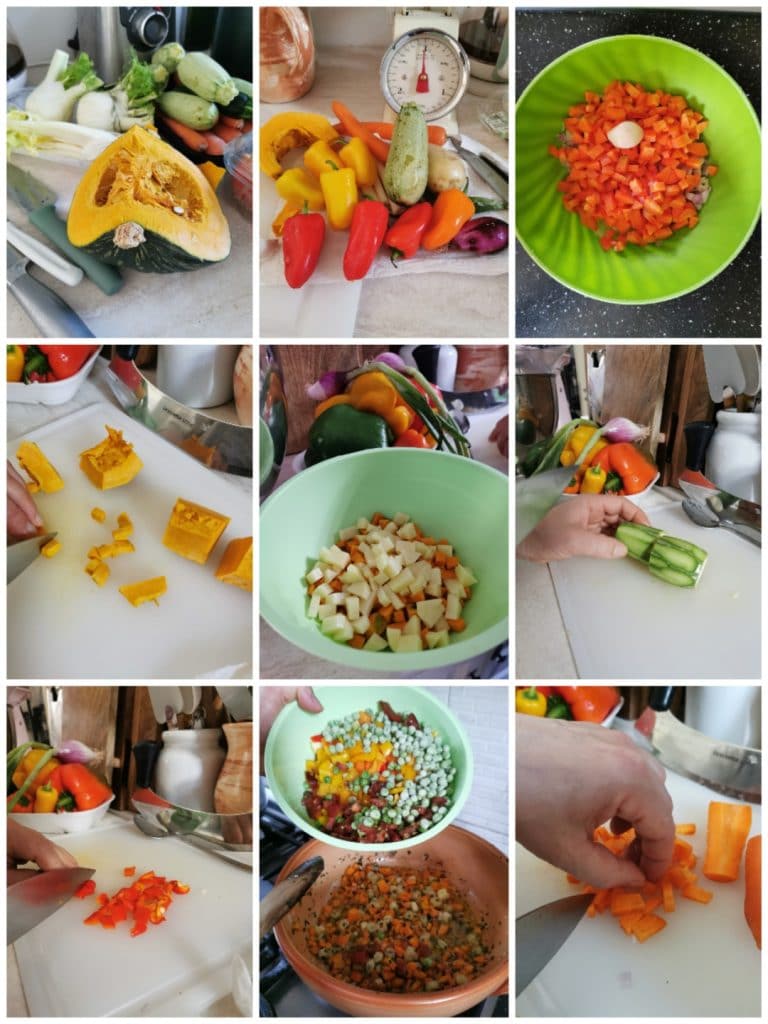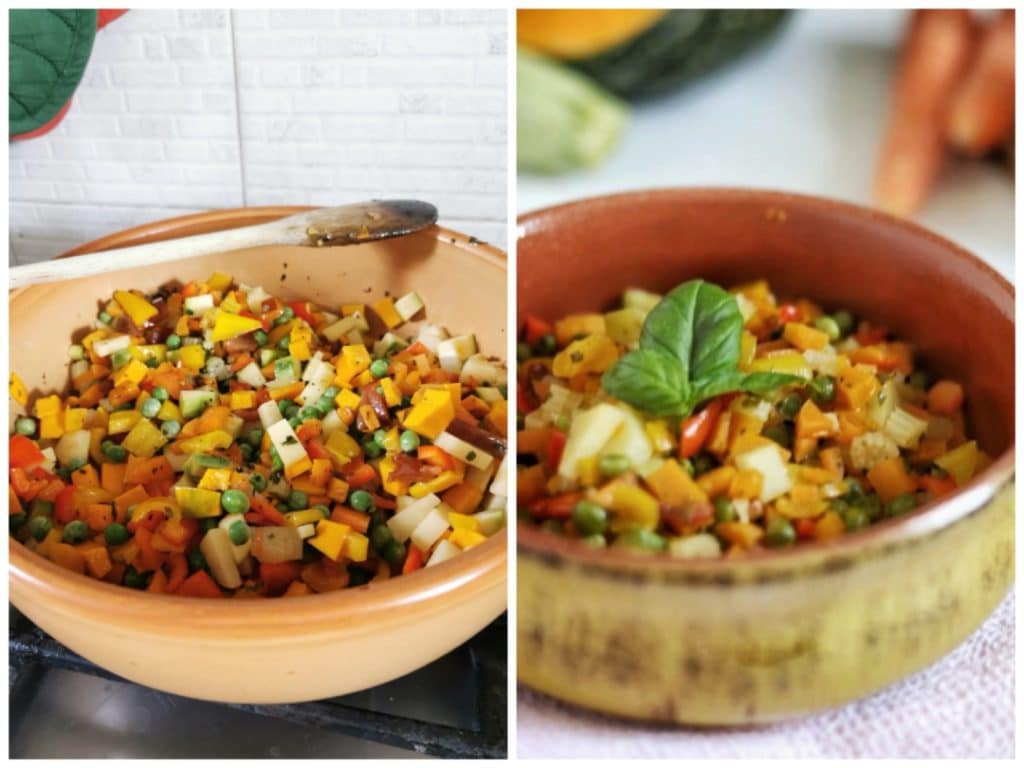Vegetable Ragu: The Taste of Autumn in One Dish
The vegetable ragu is a healthy, tasty, and versatile main course, perfect for those looking for a light alternative to classic meat. Rich in fiber, vitamins, and minerals, it is ideal for those following a vegetarian or vegan diet. Its preparation requires a bit of time, but the final result will reward every effort. Let’s discover together how to prepare a flavorful and fragrant vegetable ragu.
The Base
The base is made of a sauté of onion, carrot, and celery, to which seasonal vegetables are added. The most commonly used are eggplants, peppers, zucchinis, and tomatoes. For a more intense flavor, you can also add aromatic herbs such as rosemary, sage, and oregano.
What to Pair with Vegetable Ragu
Perfect for seasoning pasta, such as tagliatelle, fusilli, penne, or gnocchi. You can also use it to fill lasagna or to prepare vegetable meatballs. For an extra touch, you can add a sprinkle of Parmesan cheese or a handful of salted ricotta.
The Benefits
It’s a light and digestible dish, rich in fiber that promotes intestinal well-being. The vegetables used provide an excellent amount of vitamins and minerals, essential for our body. Additionally, vegetable ragu is a great source of antioxidants, which protect cells from damage caused by free radicals.
Below are other sauce/ragu recipes:

- Difficulty: Easy
- Cost: Cheap
- Preparation time: 10 Minutes
- Portions: 6 People
- Cooking methods: Stovetop
- Cuisine: Italian
- Seasonality: All Seasons
- Energy 134.18 (Kcal)
- Carbohydrates 14.34 (g) of which sugars 3.90 (g)
- Proteins 3.06 (g)
- Fat 8.21 (g) of which saturated 1.21 (g)of which unsaturated 0.17 (g)
- Fibers 3.16 (g)
- Sodium 461.22 (mg)
Indicative values for a portion of 142 g processed in an automated way starting from the nutritional information available on the CREA* and FoodData Central** databases. It is not food and / or nutritional advice.
* CREATES Food and Nutrition Research Center: https://www.crea.gov.it/alimenti-e-nutrizione https://www.alimentinutrizione.it ** U.S. Department of Agriculture, Agricultural Research Service. FoodData Central, 2019. https://fdc.nal.usda.gov
Ingredients
- 4 oz carrots
- 0.7 oz onions
- 3.5 oz red bell pepper
- 3.5 oz yellow bell pepper
- 3.5 oz peas
- 1 celery (stalk)
- 5 oz potatoes
- 3.5 oz pumpkin
- 4 oz zucchini
- 3.5 oz extra virgin olive oil
- 1 clove garlic
- 2 sprigs thyme
- 6 leaves basil
- to taste vegetable broth
- to taste salt
- to taste pepper
Tools
- Cutting Board Gvolatee 36 x 27.5CM Kitchen Cutting Board Imitates Granite Appearance, BPA Free Plastic Cutting Boards, Easy to Clean and Antibacterial, Boards are Hard and Durable, for Fruits, Vegetables, Meat
- Earthenware Pots Colì Maioliche e Terrecotte dal 1650 Brunella Pot with Lid, Terracotta, Brown, 24×12
- Knife Victorinox, Swiss Classic, 2-piece Vegetable Knife Set, Dishwasher Safe, Stainless Steel, Black
Steps for Vegetable Ragu
Start by washing and cleaning all the vegetables, then cut them into 1 cm cubes. In a pot, heat the oil, add the crushed (or whole if you intend to remove it) garlic, onion, celery, carrot, and thyme leaves. Sauté over low heat for about 10 minutes. Add the bell peppers, zucchinis, pumpkin, and potatoes, sauté for another 7 minutes, add a little vegetable broth, just enough to cook the vegetables without drowning them.

When the vegetables are ready but still crunchy, remove them from the heat, season with salt and pepper, garnish with a few fresh basil leaves, and a drizzle of raw olive oil. Ready to season a dish of gnocchi or pasta.

Tips, Notes, Variations, Storage of Vegetable Ragu
It’s best consumed fresh, but if there’s any leftover, you can store it in an airtight container for 2/3 days in the fridge, or freeze it.
The Variations of Vegetable Ragu
It’s a very versatile dish that lends itself to numerous variations. You can use the vegetables you prefer, such as potatoes, porcini mushrooms, beets, or pumpkin. You can also add legumes like lentils, chickpeas, or beans to make it even more nutritious.

